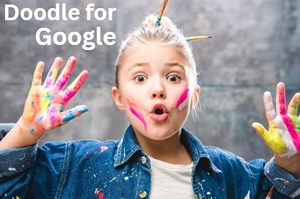A Guide to Keeping Kids Safe from AI Brainrot on the Internet
It wasn’t too long ago that art actually meant something. In fact, just a decade ago, art was all about creative, inspiring, and thought-provoking visuals. Young children, in particular, can learn a lot about the world, life, and art in general when they go through these visuals.
Take, for instance, the work of Othon Friesz, a French artist. Open to viewers at a Cherry Creek art gallery, Friesz’s work provides a refreshing take on the world. The way he uses color and form invites viewers into a world of abstract beauty. Kids today could learn a lot about art and artistic values if they were to experience these artworks in person.
Sadly, artificial intelligence has infiltrated nearly every corner of online life, from social media feeds and video recommendations to AI-generated influencers and synthetic art. And for children growing up in this environment, the line between real and artificial is blurring fast.
Parents who once worried about screen time now face the challenge of protecting their kids from what some call “AI brainrot.”
What Exactly is AI Brainrot?
The recent AI boom can be traced back to 2023, when tools like ChatGPT started gaining mainstream attention. Soon enough, the AI brainrot situation began to unfold, particularly in the latter half of 2024. It initially started with AI images and soon began to spread thanks to AI videos being widely circulated on social media.
AI brainrot refers to a type of mindless content generated using AI. It can be static images or videos, often with little to no context or purpose. When you consume such content, you might even find it to be nonsensical and unfunny. But that’s the point of brainrot; it’s just there and it’s grabbing people’s attention.
Social media platforms with generative AI content tend to keep children engaged for as long as possible. This often means serving them endless AI-made short videos or memes optimized for quick dopamine hits. The result is shorter attention spans, less patience for learning, and a growing detachment from reality.
Children exposed to this kind of stimulation over time may start finding real-world activities boring. Books seem slow, conversations feel tedious, and genuine hobbies lose their spark. Their sense of creativity becomes dependent on what algorithms feed them.

Encouraging Critical Engagement with AI Content
In England, a survey was conducted on this matter involving 504 primary and early-year school teachers. The survey showed that 84 percent of the teachers agreed that children’s attention span was shorter compared to the pre-COVID period. Moreover, around 69 percent of the surveyed teachers had noticed an increase in daydreaming and inattention.
Basically, children are not able to focus as they were able to before, and the AI brainrot is just making things worse. Under such circumstances, kids must be encouraged to critically engage with the AI content they consume.
When kids use AI chatbots or image generators, parents can discuss how these tools work and what data they use to create results. Explaining that an AI-generated image isn’t drawn by a person but constructed from other sources teaches children to separate authenticity from imitation. Asking questions like “Do you think a human artist could make something like this differently?” helps them think critically.
The goal isn’t to scare them away from technology but to encourage them to think before accepting what they see.
How Does Exposing Kids to Real Art Help in This Regard?
AI can create impressive visuals, but there’s something irreplaceable about seeing real brushstrokes on a canvas or hearing a musician’s breath between notes. Exposing kids to real art is one of the most effective ways to counteract AI brainrot.
Taking them to art galleries, local theater performances, or live music events reminds them of the human hand behind creativity. Children learn that real art carries imperfections, something AI often erases. They begin to appreciate the time, effort, and emotion behind a piece of work. Moreover, as ELEMENT Home notes, curated collections in art galleries are as much about storytelling as fine art.
When they paint or play an instrument themselves, they discover joy in the process and not just the results. This kind of exposure helps children build an authentic creative identity.
Setting Thoughtful Screen Boundaries
On average, American children between the ages of 8 and 18 spend over seven hours a day using screens. Parents can create balanced routines where digital use is tied to purpose. Watching a documentary, learning coding, or exploring digital art can be constructive, while aimless scrolling or auto-play bingeing rarely is.
Setting tech-free hours, like during dinner or before bedtime, gives children a chance to reconnect with reality. A child who spends part of the day outdoors, reading, or helping in the kitchen learns patience and presence. Over time, these habits build resilience against algorithmic addiction.
How Can We Help Kids Recognize Manipulative Design?
Many digital platforms use persuasive design to keep users engaged. Infinite scroll, autoplay, and recommendation loops are all products of behavioral engineering.
For children, these design tricks can be nearly impossible to resist. Parents can help by pointing out how these features work.
Explaining that “the next video starts automatically because the app wants you to stay longer” builds awareness. Once kids start noticing these patterns, they become more resistant to manipulation.
This simple form of digital literacy can make a profound difference. Children who understand that platforms have motives learn to question why they see certain content and how it might shape their emotions.
Keeping kids safe from AI brainrot is not about fear. It’s about awareness, balance, and deliberate choices. Technology will keep evolving, and artificial intelligence will grow smarter and more persuasive. The best defense lies in raising children who can think critically, appreciate authenticity, and find meaning beyond algorithms.
The goal isn’t to protect kids from technology entirely but to help them live alongside it without losing their imagination. In a world run by algorithms, the most radical act might be teaching children to stay beautifully, stubbornly human.






